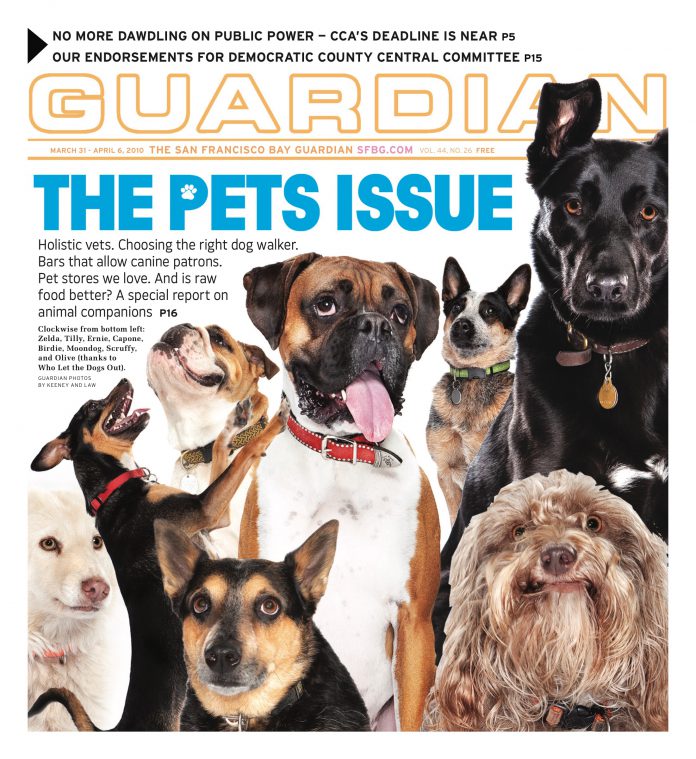arts@sfbg.com
FILM Looking at a map of Paris, the city’s rings resemble those of the giant Sequoia cross-section in Vertigo (1958), the one Kim Novak points to saying, “Somewhere in here I was born … and here I died.” It’s a touchstone scene for Chris Marker, one he recasts in both La Jetée (1962) and Sans Soleil (1983), though the Paris metaphor is prompted by his lesser known essay film, Le joli mai (“May the beautiful,” filmed with the venerable cinematographer Pierre Lhomme). The usual critical operations fail a filmmaker so fruitfully difficult to pin down, so:
C is for cat, Marker’s spirit animal from the beginning. Grinning or otherwise, “a cat is never on the side of power.” The feline kind presents respite and provocation in his films, and solidarity only glimpsed. To quote Montaigne, Marker’s ancestor in essay, “When I play with my cat, how do I know that she is not passing time with me rather than I with her?”
H is for happiness, the pop-survey platter on which Le joli mai turns. “Are you happy?” “Will you go on being happy?” The questions are pointedly pat, but Marker’s sync sound inquests press into speculative existentialism.
R is for Rouch, Jean, whose Chronicle of a Summer (1961, codirected with Edgar Morin) is Le joli mai‘s most obvious predecessor. In this film, ethnographer-poet Rouch turns the lightweight 16mm camera (a then-new invention) back on his own means of gathering information about “this strange tribe living in Paris.”
I is for interview: insistence and incredulity.
S is for statistics and the survey, the source of Le joli mai’s troubled lyricism. A concluding litany of figures (4,000 kilograms of butter, 600 tons of falling dust, 14 suicides) holds a strange mirror up to the urban organism. S is also for the spider crawling us across a dully pontificating Parisian’s shoulder—breaking decorum, the camera zooms in on the arthropod, delightfully bored. And also: Simone Signoret’s voice; scavenging the street’s interruptions and silences; the situationists, especially Guy Debord’s psychogeographic maps of Paris; and the speed of thought.
M is for May, the month of Le joli mai‘s game of hopscotch. It seems an auspicious choice given the famous Paris May still to come, but then again, as Marker argues in A Grin without a Cat (1977), 1968 came late. M is also for Michel Legrand’s drizzly score and Masculin féminin (1966) — Godard’s film owes a clear debt to Le joli mai‘s upended reportage.
A is for Algeria, Le joli mai‘s structuring absence. Filmed as military operations drew to a close, the shadow of occupation hangs over the stock market trading floor, a young couple’s difficulty talking about themselves, and, finally, the devastating testimony of a young Algerian man living in France. As for contemporary parallels of a civilian population’s repressing atrocities carried out in its name, let us simply say the complacency documented in Le joli mai still needs toppling.
R is for revolution, an endeavor in form and content. We love Marker for being the rare eyewitness not to reduce the 1960s to disavowal or twinkling hagiography, and for his willingness to draw different lines in the sand.
K is for Krasna, Sandor, one of Maker’s most reliable aliases, a migrant intellectual. Lately he has taking to posting elegant black-and-white stills of Paris street protestors, circa 2003, on his Flickr account. Five decades on, Marker still dissects the crowd, searching the “sum of solitudes” described in Le joli mai.
E is for essay, the quicksilver genre straddling verb and noun. The fact that La Jetée is still Marker’s best known film means he’s not well known (in the States, anyway), but how many consciousnesses has he burned?
R is for revision since “You never know what you may be filming.”
POETRY MEETS POLITICS: THE ESSAY — CHRIS MARKER’S LE JOLI MAI
Thurs/1, 7 p.m., $5
Phyllis Wattis Theater
San Francisco Museum of Modern Art
151 Third St., SF

